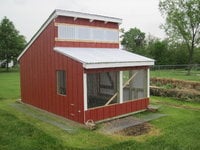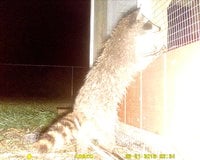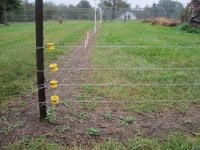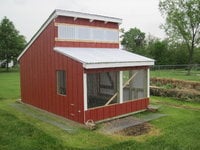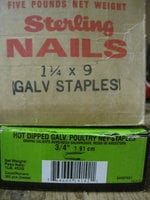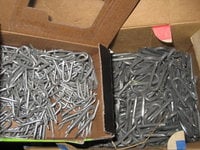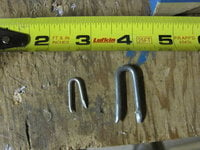Sunshine Flock
Crowing
We had a coyote come within ten feet of grabbing a chicken. They were free ranging, and we're rural in the woods. It was quite amazing to see a crouching coyote like that, ready to spring, and a miracle I saw what was happening in time to yell and scare off the coyote.
But with the chicken run and coop, that's protected space, and yet predators manage to infiltrate them all the time. We're new to raising chickens as of this year. Our flock is six months old. The coop is on a cement slab, and the windows and doors are secure. But it seems predators sometimes do get inside. I'm wondering how.
And the run has six foot posts and 2" x 4" welded fencing with affordable black deer netting top to bottom and 1/2" hardware cloth from the ground up to 36". We need to address the overhead access.
But let's assume we've covered the overhead with poultry netting. What are examples of how a predator could still get inside and harm our chickens? We buried hardware cloth about 8" to 10" (too difficult to dig down further). I'm also working on burying a flat sheet of hardware cloth all around the fencing. The door to the yard has two latches with locking carabiners.
I'm just wondering, though, what raccoons and other clever creatures do to get inside. It seems like it happens to everyone rural at some point, despite a great setup. I would find it helpful knowing examples of how this is happening, even if your setup is different or could be improved.
I guess what I'd love is to collect a list of scenarios you've actually experienced to help inform people as to how they get inside.
Thanks!
But with the chicken run and coop, that's protected space, and yet predators manage to infiltrate them all the time. We're new to raising chickens as of this year. Our flock is six months old. The coop is on a cement slab, and the windows and doors are secure. But it seems predators sometimes do get inside. I'm wondering how.
And the run has six foot posts and 2" x 4" welded fencing with affordable black deer netting top to bottom and 1/2" hardware cloth from the ground up to 36". We need to address the overhead access.
But let's assume we've covered the overhead with poultry netting. What are examples of how a predator could still get inside and harm our chickens? We buried hardware cloth about 8" to 10" (too difficult to dig down further). I'm also working on burying a flat sheet of hardware cloth all around the fencing. The door to the yard has two latches with locking carabiners.
I'm just wondering, though, what raccoons and other clever creatures do to get inside. It seems like it happens to everyone rural at some point, despite a great setup. I would find it helpful knowing examples of how this is happening, even if your setup is different or could be improved.
I guess what I'd love is to collect a list of scenarios you've actually experienced to help inform people as to how they get inside.
Thanks!




